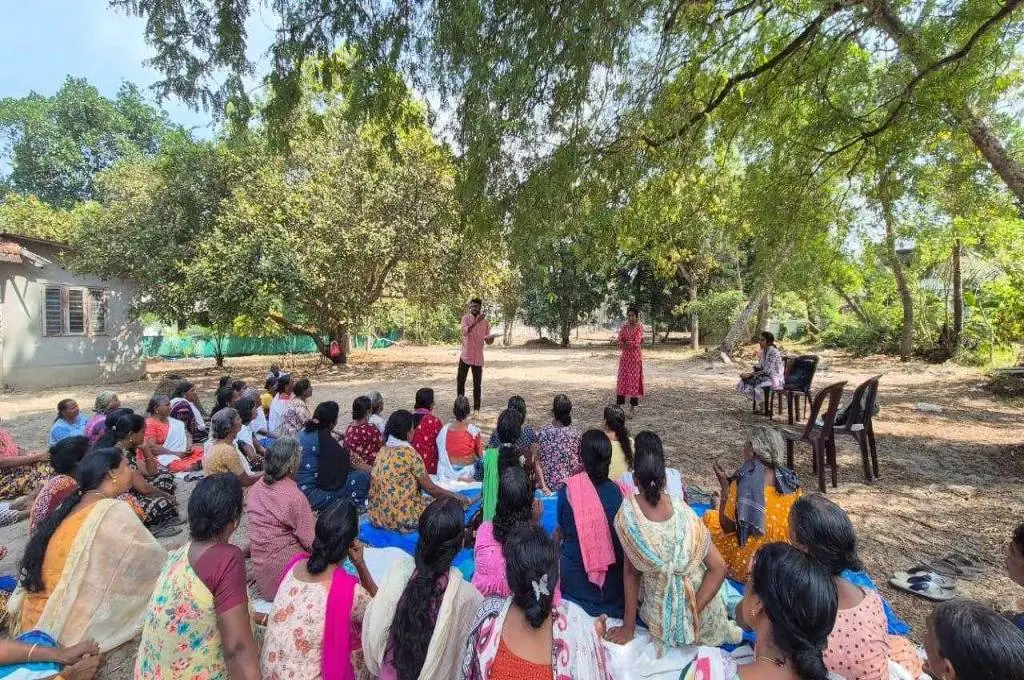Looking at where we are today with India’s health system, and the progress we have made thus far, there is still much to do if we are to deliver quality and equitable healthcare to all. In order to strengthen our health system, we need a sound data monitoring strategy that enables decision-makers to accurately track system performance and health progress, evaluate impact, and ensure accountability.
The World Health Organization (WHO) has proposed a framework for health systems, which consists of six core components or ‘building blocks’.
- Service Delivery
- Health Workforce
- Health Information Systems
- Access to essential medical products, vaccines, and technologies
- Financing
- Leadership/Governance
The WHO monitoring framework, released subsequently, recognises that sound and reliable information is the foundation of decision making across all health system building blocks. Yet, in a country as vast and complex as India, addressing gaps in information is easier said than done.

In India, the incorporation of QED (Quality, Equity, Dignity) into the discourse around public health has led to several quality improvement initiatives, largely in the sphere of maternal and child health. While such initiatives may have been beneficial to specific sub-sectors, they have not proven to be a marker of quality control across the health system at large.
The problem with data in the past
While we have begun to focus on convergence between ministries, we also need congruency between various departments within ministries; for instance within the Ministry of Health and Family Welfare (MoHFW) maternal health, child health, and family planning need to work in tandem, sharing information and learning with each other.
Lessons from maternal health initiatives could be applied to child health. Likewise, what we learned from child health could benefit family planning work, and so on. However, because each has had its own separate targets, what we’ve seen are siloed successes.

There is still much to do if we are to deliver quality and equitable healthcare to all | Photo courtesy: Photoroyalty, Freepik
The areas where we have seen success have been campaigns that were run in mission mode within a department. Immunisation—run as Mission Indradhanush—is one such example, with independently developed and managed implementation frameworks, monitoring mechanisms, and oversight from experts. Running it like a campaign helped it override the various silos within the MoHFW. It also benefitted from having assured funding and support from global organisations like Gavi—The Vaccine Alliance, National Technical Advisory Group for Immunisation(NTAGI), and National Polio Surveillance Project (NPSP).
Related article: How patient feedback can transform India’s public health system

Prior to 2012, data was collected at state and district levels, where population size and intra-district differences were too great for the data to be meaningful.
[quote]There are key data gaps that need to filled, and approaches that need ‘fine tuning’.[/quote]The National Rural Health Mission (NRHM) refined this, and ASHA workers, who shared their data with ANMs, would collect data at a sub-centre level and upwards, thereby providing more granular and actionable data. Accountability mechanisms for data monitoring like the Rogi Kalyan Samiti (RKS) were put in place. The government also introduced schemes like Flexi Funds which could use this data to identify where the gaps lay in health infrastructure and provision of services at district, block and village level, and pay for urgent but discreet expenses pertaining to the above.
While the National Rural Health Mission and National Urban Health Mission (NUHM) have resulted in important improvements to India’s public health system, there remain key data gaps that need to filled, and approaches that need ‘fine tuning’.
Addressing key data gaps
Behaviour models have changed over the years, from IEC (Information, Education and Communication) to BCC (Behaviour Change Communication) to C4D (Communication for Development), and so on and so forth. Public health was initially conceived keeping social determinants in mind, but the sector has now been medicalised to such a level that aspects of social and behavioural sciences have gotten left behind.
Related article: Using human-centred design to deliver outcomes
We do not have enough ethnographic inputs, and we don’t have data on motivations and compulsions of individuals and households. We focus on supply chains and quality of vaccines, but not on the human behaviour that determines whether the vaccine will be used appropriately or not.
We don’t have enough institutions that look into this this, nor do we have an understanding of what are good standards of success with regard to behaviour change.
We focus on supply chains and quality of vaccines, but not on the human behaviour that determines whether the vaccine will be used appropriately or not.
Take polio eradication, for example. What we thought would be done in five years, took much longer in reality. Changing behaviour had to happen at multiple levels: at a government level, where the centre and states had to agree on the way forward including changing the unit of implementation from district to block; at a community level, where faith based leaders who objected to the administration of the polio vaccine had to be convinced; and at a medical level where the vaccine delivery was changed from the traditional oral trivalent, to bivalent, to monovalent, and finally to injectable.
Incorporation of behavioural sciences and data, was necessary for all of the above.
A health system needs to be all-encompassing. It needs to include both public and private healthcare. Between 70-80 percent of healthcare is provided outside the public health system, and within the private health system, there is a mixture of formal and informal. The informal sector, dominated primarily by rural medical practitioners, accounts for 70 percent of the market; however, it isn’t recognised within the country’s comprehensive health system.
Given the absolute size and nature of this market—unregulated, and at times unsafe—it cannot afford to be missed. And this is not restricted to rural areas alone; it happens in urban and peri-urban areas as well.
If you therefore simply keep extrapolating data from the public health system, you’re actually missing out on the 70 percent. That means you are always in an environment where your data-sets are so sub-optimal that your policies will not be appropriate.




